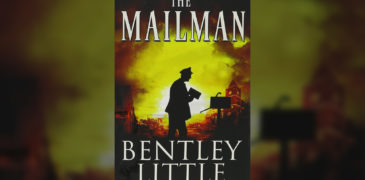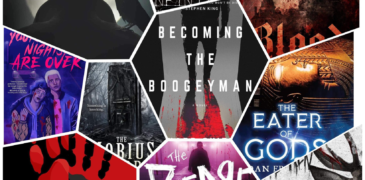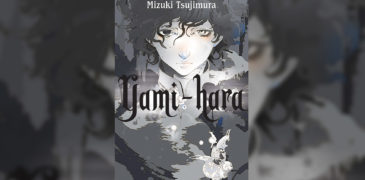
Beneath its table of contents, Revenant’s Hymn offers a comprehensive list of content warnings. From violence and suicide to eye trauma and Nazism, Elliott Dunstan’s third collection of short stories runs the gamut of traumatic themes and disturbing content. Dunstan exploits every weakness a reader might possess, inching split and bloodied fingernails into the nooks and crannies of the psyche. The only thing missing from this list is ne***philia, which must have been an oversight; as dead boys don’t bite (one of the strongest entries, and this reviewer’s personal favourite) offers an unbridled, corpse-eye view of the act. The main event, however, is the eight-part No Fun To Be Alone. Summoned at the end of World War II, four demons have been stranded on Earth for forty years. Asmodeus, the eldest, clings to their inhumanity, while their siblings – Mammon, Belial and Abaddon – search for purpose and acceptance among the humans. Asmodeus’ tale is fractured and fragmented, punctuated by poetic meditations on trauma, mental illness, and death.
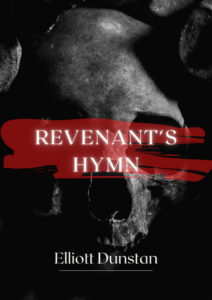
Revenant’s Hymn cover
No Fun To Be Alone is unfortunately the weakest story. The demons never truly feel demonic: Mammon and Asmodeus read like disaffected twenty-somethings; narratively, Belial exists to remind Asmodeus that they are loveable; and the reveal of Abaddon, established as the most inhuman of them all, is underwhelming to say the least. Most egregious is the suspension of disbelief required to have any chance of accepting that Asmodeus is or has ever been fearsome. After the opening chapter, wherein they gloat over a terrified woman’s slow and bloody death, their intimidation tactics amount to sneering, sarcasm, and mostly empty threats.
On top of this, the demons’ story implies that assimilation – not liberation – of the ‘other’ is the way forward. The demons crave human connection; they adopt human names and occupations. Their happiness lies in homogeny, not diversity. This reviewer’s interpretation is, of course, not the only valid one (the necessity for demons and humans to coexist acknowledges the need for us to live through and with our trauma), but No Fun To Be Alone becomes a story about learning to conform. Of course, figuring out one’s place in the world is always admirable, and something the book explores brilliantly is Asmodeus’ reliance on their role as a demon. They cling to this facet of their identity, unsure of who they are without it. Dunstan expertly parallels a demon’s struggle to belong with the way trauma can define us. When trauma colours so much of our experience, how can we possibly know who we are without it?
The demons take their names from religious texts: Asmodeus is the prince of demons, or the king of earthly spirits in Judeo-Islamic tradition; Mammon refers to money and wealth, or an entity that promises it, in the New Testament; Belial is a word meaning ‘wicked’ or ‘worthless’ in the Hebrew Bible, and the devil in Christian texts; and Abaddon refers to a bottomless pit in the Hebrew Bible, a place of destruction or archangel of the abyss in the Christian Bible, and the king of an army of locusts in the New Testament specifically. Revenant’s Hymn also assigns each demon a role as the Book of Revelations’ horsemen (Asmodeus as Death on the Pale Horse; Mammon as War on the Red Horse; Belial as Pestilence on the White Horse; and Abaddon as Famine on the Black Horse).

Four Horsemen of the Apocalypse (1887) by Viktor Vasnetsov
These roles are never fully explored, any references made to their origins are cursory. Of course, this further drives home the idea that the demons’ true purposes lie without the names and identities assigned to them. In this sense, the trans/queer allegory is strong. Furthermore, Revenant’s Hymn explores how, in many conversations, ‘religious’ and ‘Christian’ are used synonymously. Dunstan invokes the Four Horsemen and other Christian imagery alongside references to Jewish culture (mourners in all our love “tear at their clothes without restraint”). The demons’ stories chronologically begin in Nazi Germany, and this idea of evil (a genocide) begetting evil (the demons) works well. The demons are assumed to have Christian origins, when in reality they were born of Jewish persecution and trauma.
Despite tackling many dark themes, Revenant’s Hymn unfortunately never reaches a level as twisted or disturbing as the heavy content warnings might suggest. This reviewer has an intense aversion to eyes, but the promised eye trauma in mary mary ordinary (where did your monsters go?) barely registers. Happily, mary mary is one of the strongest stories in the collection, tackling a totalitarian regime’s thought-policing tactics through the eyes of a censor. The aforementioned dead boys don’t bite is easily the most shocking, from its premise to its prose. It is imbued with a twisted sense of helpless, righteous anger: “we can’t feel it! At least, not much!” Dunstan covers so many topics that those missing are all the more noticeable. Why, for example, does a book set in the mid-1980s not touch on the AIDS epidemic at all?
Ultimately, Revenant’s Hymn is fascinating. The main narrative suffers in comparison to many of the other stories, but the book is worth reading for Dunstan’s staggering poetry – dead boys don’t bite and the transient, a beautiful meditation on a beat poet, and what it means to be queer and hiding it, are new favourites – and deeply personal prose. The book wears its influences like pride pins, from mirrors on the ceiling‘s use of ‘Hotel California’ to shades of Edgar Allan Poe in the dripping tap and the headless, waiting. Horrifyingly perceptive and deeply enthralling, Revenant’s Hymn is sure to resonate even with readers whose experiences are not represented here. This reviewer may have craved something more consistently shocking and depraved, but Dunstan’s balancing of true horror with hope and optimism is worth celebrating.
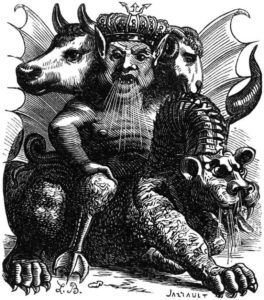
Louis Le Breton’s interpretation of Asmodeus, taken from the 1863 edition of Jacques Collin de Plancy’s Dictionnaire Infernal (1818)
Revenant’s Hymn releases March 5th 2022. Grimoire of Horror was provided an ARC in exchange for an honest review. You can preorder the ebook via Books2Read, Payhip, or directly from the author’s website. You can follow the author for updates on Twitter @ElliottDunstan.
More Book Reviews
Hey Mike Flanagan, we’ve found your next big project! New indie horror authors are crawling out of the woodwork every week, and just like indie films, their products are hit… Imagine, if you will, that you are an English teacher in small town Arizona. You live an average existence with your wife and son. You get along well with your… Eric LaRocca brings us a short but darkly sweet tale of epistolary horror. While it may not be spilling blood by the bucketful, his novella of sadomasochism gone wrong had… Bringing you a list of the most terrifying books we’ve read this past year. Hold onto your hats, it’s going to be a bumpy ride. List: Becoming the Boogeyman –… The Grimoire of Horror’s Recommended Reading List for Women in Horror Month While many in the literary community are still celebrating Women in Horror Month in February, we at the… Yami-hara – an abbreviation of yami harassment. Yami harassment is a compound of yami (darkness) and harassment; unwelcome conduct toward a person stemming from darkness in one’s own mind or…Daemon Manx’s New Series Is Destined For the Big Screen! The Ojanox – Spoiler Free Book Review and Author Interview
The Mailman (1991) Book Review – Delivering Bad News
Things Have Gotten Worse Since We Last Spoke Book Review – What Have You Done Today to Deserve Your Eyes?
Top 10 Reads for the Spooky Season 2023
Women in Horror Month – The Author Series Part 2
Yami-hara (2023) Book Review – A Haunting Tale of Darkness
Isabelle is a writer from the UK who enjoys alternative manga and horror films. When not writing, you can probably find Isabelle buying books or obsessing over Martin and Lewis.

